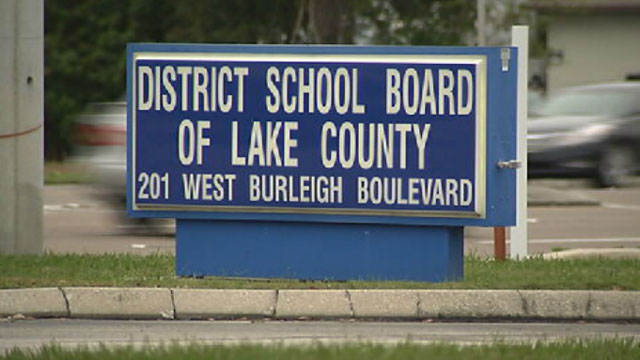Here is the ugly reality of paying to educate Lake County students: We’re No. 66 of 67 counties in funding per-pupil.
No, the state doesn’t give each county an equal amount per student. That would be far too simple. Disabuse yourself of that quaint notion.
Instead, it uses an arcane formula designed to make sure the 14 wealthiest and biggest districts in the state keep getting the most money per student year after year.
The smallest and most rural counties get a “sparsity supplement” to catch them up, leaving Lake and other counties its size “muddled in the middle,” said state Rep. Larry Metz, R-Yalaha.
The average Florida spends per student annually: $7,404. What Lake County gets to spend: $6,800.
That is 8 percent less than the average and 26 percent below the district that get the most per student. That’s crazy.
Lake is the 19th-largest school district in Florida, but 66th in funding, thanks to the discriminatory formula.
“It’s a quagmire,” School Board Chairman Bill Mathias said.
Now, for the first time, elected types in Lake are trying to change the inequity that annually rips off Lake students and imposes everlasting mediocrity on this school district.
Mathias teamed up with Metz to propose a bill for the legislative session that begins Jan. 12, to eliminate one of the most biased of the 16 points in the formula. If they are successful, Lake would rise from No. 66 to No. 51 in funding and get $4.7 million more than this year.
Here’s a primer on how school funding works:
Using the outdated formula, the state provides a certain amount of cash to each district every year and then it tells each school board what tax rate it must levy to make up the “required local effort.” This is a euphemism. Board members have no say over the amount. They could decrease the rate, but then the state automatically takes away its share.
Let’s say that Lake decides it is going to have the most well-funded, dandiest school district in the state. To do that, board members decide to impose a little extra tax. In its quest for consistent mediocrity, the state reduces its contribution by that amount.
Among the variables that make up the irrational formula are different amounts of money for each county for declining enrollment, transportation and digital classrooms.
But the biggest monster is something called the “district cost differential,” which Metz’s proposed bill will attempt to eliminate. The extra money that comes with the cost differential is based on home values in the area, income and commercial and industrial property.
Counties with the highest home values, the best incomes and the healthiest commercial and industrial bases get way more money than little old Lake.
Huh? The wealthiest counties get the most?
“I know,” Mathias said, shaking his head. “It’s been part of the formula since 1973.”
Metz’s bill just came back to him from the House’s bill-drafting operation, and Sen. Alan Hays, R-Umatilla, sent the proposal to drafting in the Senate. Metz said he isn’t sure who will co-sponsor the bill in the Senate, but he’s working to round up support from legislators in other counties stuck in the middle and unhappy with the formula, too.
Metz, a former Lake School Board member, said he doesn’t want residents to expect the bill to pass this year. But he plans to work it and refile in 2017 if necessary.
“The big counties are going to fight it, but you have to start somewhere,” Metz said. “At least we hope it will initiate a dialogue during the budget process that might help us get recognition that the formula is inequitable.”
Let’s step back and take a broader look at where Florida and Lake stand nationally.
Gov. Rick Scott’s press spinners declared that his proposed 2016-17 budget proposes “historic” education funding and per-pupil “record-level” spending. However, even if the Legislature agreed to his proposals, the increase wouldn’t boost Florida out of the lowest ranks in education spending.
The 2013 national per-student spending average was $10,700 — that’s 36 percent more than Lake spends today on each pupil. To get even to the 2013 national average, Florida would have to dump $9.7 billion more into educating students, according to calculations by the Sarasota Herald-Tribune’s calculations.
Florida ranked 44th in total per-pupil spending in 2013 by the U.S. Census Bureau’s Annual Survey of School System Finances, but a quirk in the calculations allowed Florida and another half dozen states to count some money that the rest didn’t. When compared on a level field, Florida ranks last, behind Utah.
Now, take into account that Lake spends next to the least of 67 districts in a state that has hit rock bottom in education. Oh, this is “historic,” all right — in the same way the battle for the Alamo was historic.
Stay tuned. Once Metz gets the bill filed, we’ll ask the representative what we can do to help him get it passed.
Lritchie@tribune.com. Lauren invites you to send her a friend request on Facebook at www.facebook.com/laurenonlake.


